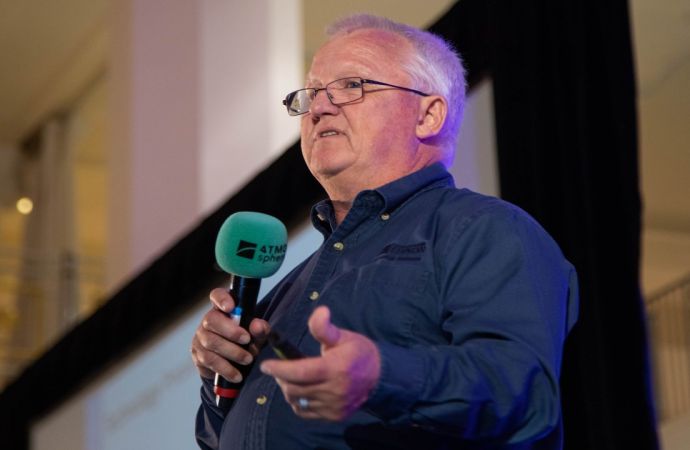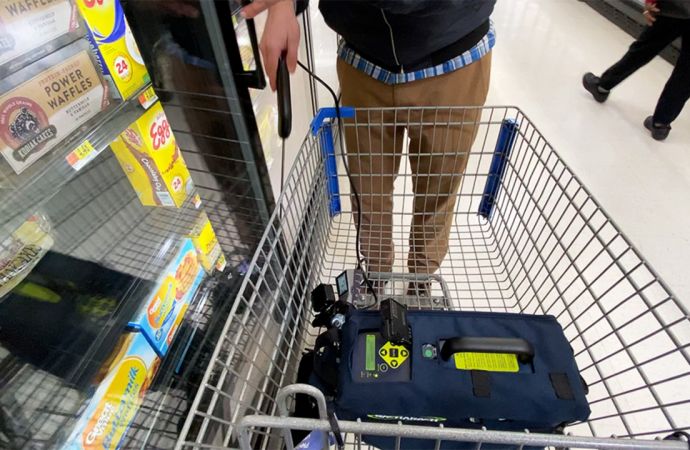In the United States, utilities budgeted about $6 billion to promote energy efficiency through incentives in 2013.

Part of those funds were used to support “newer technologies” that save energy, such as those that use natural refrigerants, said Ammi Amarnath, senior programme manager for the Electric Power Research Institute (EPRI) at the start of a panel discussion on utilities and incentives at ATMOsphere America 2016 in Chicago.
EPRI, a Palo Alto-based R&D organisation funded by utilities around the world, aims to stimulate innovation and help accelerate energy-efficient technology “to commercial development,” said Amarnath. Natural refrigerant systems are among the technologies that EPRI is targeting.
The three utilities in the panel discussion all acknowledged the delays often associated with incentive funding for natural refrigerant technologies, particularly custom projects.
$8 million for emerging technologies
One major utility that has started offering custom incentives to companies using natural refrigerant systems is Southern California Edison (SCE), which serves nearly 14 million residents over a wide swathe of the Golden State.
SCE has about $8 million to spend on incentivising the adoption of “emerging technologies,” said Paul Delaney, senior engineer for the utility. “It’s about how helping jump over the chasm and moving ahead with technologies that make a lot of sense.”
Based on research regarding a low-charge ammonia packaged system at a Lineage Logistics cold storage warehouse in Oxnard, California, SCE is offering custom incentives of $0.08/kWh of energy saving, and $150/kW of demand reduction.
“For any technology that saves energy and demand, we can always do a custom incentive,” said Delaney. These incentives require “before and after measurement” to validate the energy savings.
Because SCE serves a 50,000-square-mile area with eight climate zones, some incentives, including those for natural refrigerant systems, take a “hybrid or calculated” approach based on temperature and application.
Delaney acknowledged that SCE likes deemed (express) incentives, designed for technologies that have proven efficiency track records. “Those have lower administrative costs and are straightforward.”
Another low-charge ammonia system SCE is studying is the NewTon 3000, an ammonia-CO2 packaged system with 220 lbs. of ammonia charge. The system is installed at a food processor in Irvine, California, the first US deployment of the NewTon, made by Japanese OEM Mayekawa.
In addition to low-charge ammonia systems, SCE is looking at ultra low-temperature freezers, self-contained display cases that use propane, and high-efficiency R22 replacements.
Delaney noted that incentives for custom projects can be delayed while they are evaluated by the California Public Utilities Commission. However, SCE is moving toward a “performance-based” programme that would include upfront funding followed by incremental payouts during validation.
No new power plants
The Bonneville Power Administration (BPA) is a federal utility wholesaler that sells and transmits carbon-free power (generated by hydro and nuclear sources) to retail utilities in the Pacific Northwest. BPA is offering incentives to “spur new technologies that make businesses and home more efficient,” said Ryan Fedie, engineering manager for BPA.
In its efficiency programmes, BPA is following the lead of the Northwest Power and Conservation Council, which is striving to offset 90% of the load growth in the Pacific Northwest over the next two decades via energy efficiency and demand management. “The goal is to not build new power plants,” Fedie said, “and to transform end uses to be more energy efficient. And dollars are available to build energy efficiency”.
Like SCE, BPA provides “one-off incentives for energy reduction” but is trying to move to more deemed incentives, which are “more standardised, make dollars available earlier, and don’t have to be validated,” said Fedie.
BPA stresses data collection to determine the efficiency of new technology. To that end “we go on site and monitor electricity use by submetering circuits,” he said. For new equipment, that process could take up to a year.
Data supporting the business case is used to persuade end users who are “hesitant to deploy new equipment,” said Fedie. “We show the end user why they should make the investment.”
Wide-ranging programme
ComEd, an electric utility that serves 3.9 million customers in the northern Illinois region (which includes Chicago), started its energy-efficiency programme in 2008 following passage of state legislation. The programme covers assessments, incentives, discounts and optimisation, explained Neal Latham, ComEd’s custom and industrial systems programme manager.
The incentives programme includes standard incentives for commercial and industrial lighting, HVAC and refrigeration. ComEd has a new “comprehensive energy savings” offer such that “the more projects are completed, the greater the incentive”.
ComEd’s custom incentives programme provides cash for more complex projects not covered by the standard programme. “If you’ve got something new and it saves energy, bring it to us,” said Latham.
For new construction or a major renovation, ComEd offers incentives for projects that implement at least two “significantly-beyond-code conservation measures,” including HVAC and refrigeration. The earlier in the design process the incentive is applied for, the larger the incentive, he noted.
ComEd also offer an optimisation programme targeted at medium-to-large industrial customers; refrigeration is among the systems that can be studied. In addition, a retro-commissioning programme is available to identify and implement low-cost energy-saving improvements to buildings.
To speed up the delivery of custom incentives, ComEd is “looking at phased payments that would start when the equipment arrives,” said Latham. “We’re doing a small pilot.”
To read more coverage of ATMOsphere America, please click here.
Related stories



